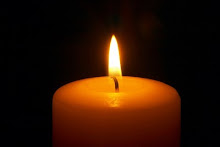As of today, Wednesday March 28, 2012, there has been no light where I live. The generator has been running since Saturday night (Well, the generator takes a three hour break and resumes for duty). Erratic power supply is a pet peeve of mine. I cannot comprehend why there would be no constant power supply in Nigeria considering the resources we have and the amount of money that has been sunk into that industry. Our electricity challenges make me believe that our leaders do not care about addressing this issue.
I say this because, the process of electricity supply is simple. It is divided into three or four stages. These are: generation(the process of converting raw energy into electrical energy), transmission (the transportation of electricity in high voltages from generation to distribution), distribution (process of delivering electricity at low voltages from the transmission network to the final consumer), and retailing ( this is purchasing wholesale electricity and selling it to the consumers). In Nigeria, we have stages 1-3 (handled by one company NEPA/PHCN). What are the traditional fuel sources of electricity? They are natural gas, hydro, and coal. This begs the question of why we cannot have constant power.
Anyways this post is semi- good news. Before I share the good news, some statistics:
- Over 2 trillion naira was spent on “tackling” Nigeria’s power problem between 2000- 2007.
- In urban areas 40% of the population is connected to the national grid; in rural areas it is 15%.
- We do not have electricity 60% of the time (that is what researchers say, my experience is more like 90%) About 60 million Nigerians own generators and as at 2009 N1.56 trillion was spent to fuel these generators.
- Nigeria claims to have an installed capacity of (6,000 Megawatts) but actually generate a peak of 4,000 Megawatts of electricity. This is a sixth of what New York generates (the State has a peak capacity of 37, 707 Megawatts. This is also a sixth of South Africa’s peak capacity.
Ideally, these new regulations are good politically and economically: politically, residents in a state can hold their governments accountable for power supply. This is because state and local governments are closer to the people. From experience, I have witnessed residents visiting their representatives and leaders to report issues that affect them. Thus, citizens who feel strongly about power supply would make their demands known to the government. Related to this is that, it is easier to vote out a governor or local government chairman for failing to deliver constant power than a president.
Economically, these regulations do two things. First, states that are not financially buoyant can collaborate with States that have the financial capacity to generate electricity. For instance South Western states of Nigeria can incorporate electricity generation and distribution into their DAWN (Development for Western Nigeria) Agenda, second, these regulations may provoke healthy competition among states and local governments and promote economic development. For instance, if Osun state has 24 hours power supply and my business is in Oyo State or Lagos, holding constant other factors, I would relocate my business to Osun and pay taxes there. This leads to more revenues for Osun State and Oyo may see the need for constant power supply. We see a real life example of this in significant number of Nigerian businesses and investments located in Ghana and South Africa.
Practically, how can States utilize these regulations? I don’t think States that decide to generate their own power should create NEPA-like institutions because of the inefficiency of NEPA. If state governments get involved in generating, transmitting and distributing power, the same problems of NEPA would be recreated. I submit that States can provide the necessary infrastructure for generation and transmission. That is, States can enter into public- private partnerships (PPP) with interested investors. PPPs are necessary because States can’t go it alone for above reason and also because there are competing needs with limited resources. Alternatively, they can hands off PPPs and assist private investors get partial risk guarantees from IFIs like the World bank.
Let us assume that the problem of capital is solved, how would the government prevent exploitation investors get capital to generate, transmit and distribute electricity, what would the government do to prevent exploitation. My answer is regulate and set prices (tariffs on electricity) like it is done in the US and UK. As an aside, in sister African countries like Ghana and Botswana, electricity generation is done by the state and there is constant power supply.
That said, I recommend privatization because of the Nigerian factor. However, in what ever PPPs that would come up as a result of these authorizations, the government should remember that their role is to protect the people from exploitation by businesses – hence the need for strong regulation- and yet create conditions that incentivize the private to come into this business.
After all is said and done, what would be the role of the NEPA? One important issue that needs to be addressed is the issue of power generation and I propose that this should be the focus of the agency Our electricity generation is far below optimal and the FG’s goal is to generate 10,000 MWs by 2020. This is incredible! 10,000 MWs in 2011 does not effectively address our power problem now. I suggest that at the Federal level, the power ministry should work on harnessing and utilizing the sources of power generation. The ministry needs to look into other sources of power generation such as solar energy wind, coal and nuclear energy so that by 2020 we have an installed capacity of 50, 000 MWs.
Ok, so that’s the end of my submissions and proposal.
Deuces.






Interesting...I like the statistics...what were your sources for the statistics of the percentage of the population connected to the grid?
ReplyDeleteHey, Thank you. it is from NERC ( Nigerian Electricity Regulatory Commission)
ReplyDelete